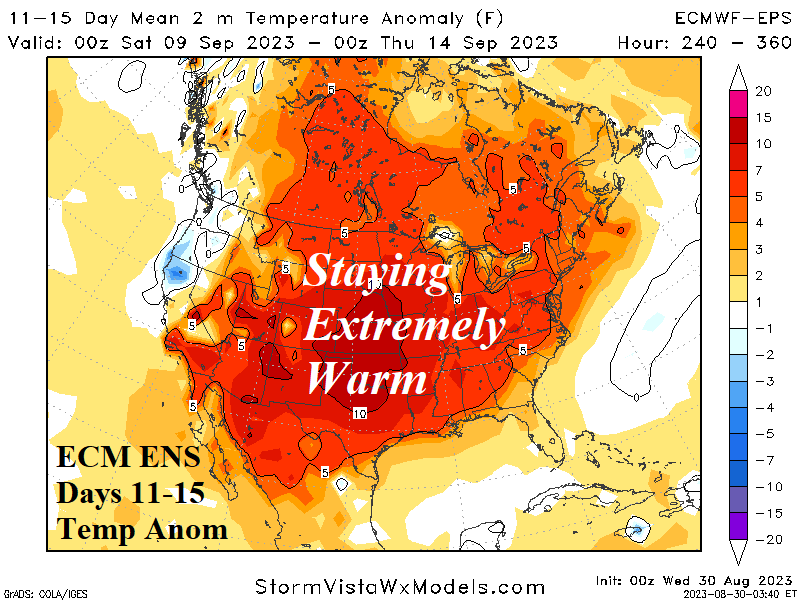
El Nino Strengthening But Subsurface A Lot Different From 2015 El Nino Episode
08/28/2023, 11:50 am EDT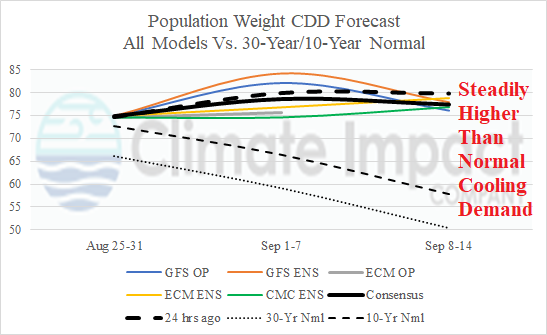
Steadily Increasing Cooling Demand for Electricity Markets Early September
08/31/2023, 8:42 am EDTCharts of the day: Risk of >95F for the U.S. in the medium range.
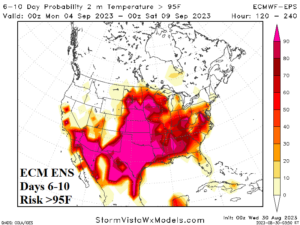
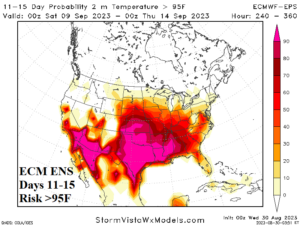
Discussion: Into mid-September a large area of >95F is forecast by ECM ENS to include much of the Great Plains, Southwest U.S. to Southern California, and the southeast quarter of the U.S.
Medium-range 6-10 Day Forecast Valid September 4-8, 2023 (24-hour change)


Discussion: Amplified upper ridge extends across the Midwest U.S. to Quebec early in the period and joins forced with a 594+ DM subtropical high in the Southwest U.S. by mid-to-late period. The result is an unchanged extremely warm 6-10-day outlook from Texas and vicinity to Quebec. A warm-up late period in California is possible.
Medium-range 11-15 Day Forecast Valid September 9-13, 2023 (24-hour change)


Discussion: Key to the 11-15-day forecast is the sustained upper ridge over the Southwest U.S. which ejects heat into the broad ridge pattern across the Central U.S. The extremely warm forecast for most of the U.S. is unchanged since yesterday.
U.S. Medium-range Precipitation Forecast

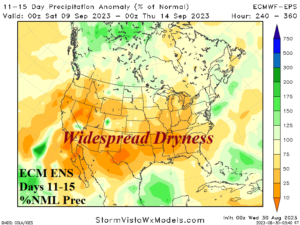
Discussion: A wet trough shifts across the Northwest U.S. while an upper ridge dries out the Central and East States in the 6-10-day period. Very dry conditions also exist in the Southwest U.S. to California. In the 11-15-day period, a large upper ridge pattern will spawn widespread dryness across the U.S.
Days 16-20 Extended range Temperature Forecast valid September 14-18, 2023 (previous below)
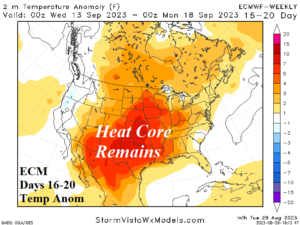
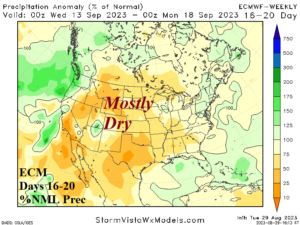
Discussion: ECM maintains the extremely warm pattern as the heat core across Texas and the southern Great Plains remains intact and westerlies aloft extend the warmth eastward. The pattern remains very dry. The CFS V2 (model) is on its own cooling the Northeast U.S.
![Climate-Impact-Company-logo-sm[1]](https://climateimpactcompany.com/wp-content/uploads/2023/08/Climate-Impact-Company-logo-sm1.png)
